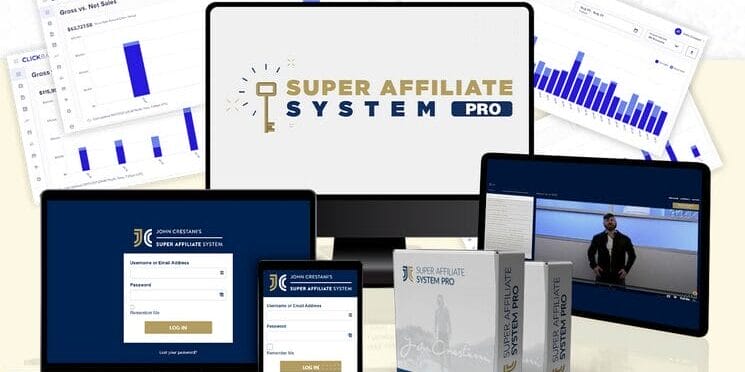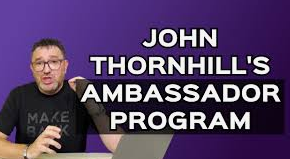Are you ready to embark on an exciting journey into the world of blogging? Starting a blog can be a fulfilling and rewarding endeavor, but it’s essential to master the basics before diving in headfirst. In this comprehensive guide, we will take you through the fundamental steps you need to start a successful blog from scratch. From choosing the right blogging platform to crafting compelling content and building your brand, we’ve got you covered every step of the way. Whether you’re a novice looking to share your passion or a seasoned blogger wanting to enhance your online presence, this article will provide you with the tools and strategies needed to kickstart your blogging journey with confidence. Get ready to unleash your creativity and watch your blog flourish!
In the following sections, we’ll delve into the essential aspects of creating and running a successful blog. From engaging your audience with captivating content to optimizing your blog for search engines and exploring monetization opportunities, we will equip you with valuable insights and practical tips to help you navigate the blogosphere effectively. So, grab a cup of your favorite beverage, settle in, and let’s dive into the world of blogging together!
Choosing the Right Blogging Platform: A Beginner's Guide
When starting a blog, one of the most crucial decisions you’ll make is choosing the right platform to host your content. Your blogging platform is essentially the foundation of your blog, determining functionality, ease of use, design options, and scalability. For beginners, this choice can seem daunting with the plethora of options available in the market. To help you navigate this important decision, consider the following factors:
**Identify Your Needs:** Before diving into the vast array of blogging platforms, take a moment to assess your needs. Are you planning a simple personal blog or a more complex site with e-commerce capabilities? Understanding your requirements will guide you in selecting a platform that aligns with your goals.
**Ease of Use:** For beginners, a user-friendly interface is essential. Look for platforms that offer intuitive navigation and simple customization options. WordPress, for example, is a popular choice for its beginner-friendly setup and wide range of themes and plugins to enhance your blog.
**Cost Considerations:** While some platforms are free to use, others may require a monthly subscription fee. Evaluate your budget and choose a platform that offers the features you need at a price point that fits your financial plan. Keep in mind that as your blog grows, you may need to invest in additional features or upgrade your plan.
**Design Flexibility:** Your blog’s design plays a crucial role in attracting and retaining readers. Explore the design options offered by various platforms to ensure they align with your aesthetic preferences. Customizability is key – opt for a platform that allows you to personalize your blog to reflect your unique style.
**Support and Resources:** As a beginner, you may encounter technical challenges or have questions about optimizing your blog. Choose a platform that provides ample support through tutorials, forums, and customer service. Having access to a supportive community can greatly aid you in overcoming obstacles and mastering your blog.
By carefully considering these factors and exploring different blogging platforms, you can make an informed decision that sets you up for success in your blogging journey. Remember, your platform is the backbone of your blog, so choose wisely to create a strong foundation for your content
Crafting Compelling Content: Tips for Engaging Your Audience
When starting a blog, one of the key elements that can truly make your blog successful is the ability to craft compelling content that engages your audience. Creating content that resonates with your readers and keeps them coming back for more is crucial for building a loyal following and growing your blog. Here are some tips on how you can effectively engage your audience through your blog content:
1. **Know Your Audience**: Before you start writing, take the time to understand who your target audience is. What are their interests, pain points, and preferences? Tailor your content to meet the needs of your specific audience to ensure that it resonates with them.
2. **Create Valuable Content**: Offer your audience something of value in every blog post. Whether it’s practical tips, informative insights, or entertaining stories, make sure that your content provides something meaningful to your readers. Valuable content will keep your audience engaged and coming back for more.
3. **Be Authentic**: People connect with real stories and authentic voices. Let your personality shine through in your writing to create a genuine connection with your audience. Share personal anecdotes, experiences, and perspectives to make your content more relatable and engaging.
4. **Use Engaging Formats**: Experiment with different formats such as lists, how-to guides, infographics, videos, and podcasts to keep your content fresh and engaging. Mix up your content delivery to cater to different learning styles and preferences among your audience.
5. **Encourage Interaction**: Invite your audience to engage with your content by asking questions, encouraging comments, and promoting social sharing. Create a sense of community around your blog by fostering conversations and building relationships with your readers.
6. **Optimize for Readability**: Make sure your content is easy to read and visually appealing. Use subheadings, bullet points, and short paragraphs to break up the text and improve readability. Incorporate images, videos, and graphics to enhance the overall appeal of your blog posts.
By focusing on crafting compelling content that engages your audience, you can set a strong foundation for your blog’s success. Remember to consistently deliver value, stay true to your voice, and foster meaningful connections with your readers to create a thriving and engaged community around your blog
Building Your Brand: Establishing a Unique Voice and Identity
When embarking on the journey of starting a blog, one of the fundamental steps involves establishing a unique voice and identity for your brand. This crucial aspect sets the tone and forms the foundation upon which your blog will thrive. Here are some key strategies to help you build a strong brand identity from the outset:
1. Determine Your Niche:
Identifying your niche is the first step towards establishing a unique voice for your blog. Consider what you are passionate about or knowledgeable in and how you can offer value to your target audience within that space. By honing in on a specific niche, you can differentiate yourself from competitors and carve out a distinct identity in the blogosphere.
2. Develop Your Tone and Style:
Your brand voice encompasses the tone and style in which you communicate with your audience. Whether you choose to be authoritative, conversational, humorous, or inspiring, it is essential to maintain consistency in your writing. Your tone should resonate with your target audience and reflect the personality of your brand.
3. Create a Compelling Visual Identity:
In addition to crafting a unique voice, establishing a compelling visual identity is equally important. This includes designing a memorable logo, selecting a cohesive color scheme, and choosing visually appealing fonts. Consistency in your visual branding across your blog, social media platforms, and other marketing materials helps reinforce your brand identity and makes it easily recognizable to your audience.
4. Showcase Your Expertise:
To stand out in the saturated blogosphere, showcase your expertise and passion for your chosen niche. Share your knowledge through well-researched content, insightful perspectives, and engaging storytelling. Position yourself as a thought leader in your field to build credibility and authority within your niche.
5. Engage with Your Audience:
Building a strong brand identity goes beyond aesthetics and content. A vital aspect of brand building is engaging authentically with your audience. Respond to comments, participate in discussions, and seek feedback to foster a sense of community around your blog. By establishing a meaningful connection with your readers, you can strengthen brand loyalty and attract a dedicated following.
By focusing on these strategies, you can effectively build a brand identity that resonates with your audience, sets you apart from competitors, and lays the groundwork for a successful blog. Remember, consistency is key in maintaining your brand voice and identity as you continue to grow and evolve in your blogging journey
Unlock Your Affiliate Success Today!
Ready to start earning real income with affiliate marketing? Get instant access to the Super Affiliate System and follow step-by-step training, use proven ready-to-go campaigns, and join a supportive community.

Navigating SEO: Strategies to Boost Your Blog's Visibility
When starting a blog, one of the key components to focus on is Search Engine Optimization (SEO). SEO plays a critical role in boosting your blog’s visibility and increasing organic traffic to your website. Here are some effective strategies that can help you navigate SEO successfully as you kickstart your blogging journey:
1. **Keyword Research**: Conduct thorough keyword research to identify the terms and phrases your target audience is searching for. Utilize tools like Google Keyword Planner, SEMrush, or Ahrefs to discover relevant keywords with high search volume and low competition.
2. **Optimize On-Page SEO**: Pay attention to on-page SEO elements such as meta titles, meta descriptions, headings, and content structure. Ensure that your chosen keywords are strategically placed throughout your blog posts to improve search engine rankings.
3. **Create High-Quality Content**: Producing high-quality, valuable content is essential for SEO success. Search engines prioritize content that is informative, engaging, and relevant to users’ search queries. Focus on creating original content that addresses your audience’s needs and provides solutions to their problems.
4. **Optimize Images**: Optimize images on your blog by using descriptive filenames and alt text. This helps search engines understand the context of your images and can improve your chances of appearing in image search results.
5. **Internal Linking**: Incorporate internal links within your blog posts to improve navigation and encourage users to explore more content on your website. Internal linking also helps search engines understand the structure of your site and the relationship between different pages.
6. **Mobile-Friendliness**: With the increasing use of mobile devices, having a mobile-friendly website is crucial for SEO. Ensure that your blog is responsive and loads quickly on mobile devices to provide a seamless user experience.
7. **Backlink Building**: Building a strong backlink profile is essential for improving your blog’s authority and credibility in the eyes of search engines. Seek opportunities to earn backlinks from reputable websites within your niche through guest posting, collaborations, or participating in industry forums.
By implementing these SEO strategies as part of your blog launch plan, you can effectively boost your blog’s visibility, attract more organic traffic, and ultimately create a successful and sustainable blogging platform. Remember, SEO is an ongoing process, so continuously monitor and adjust your strategies to stay ahead in the dynamic digital landscape
Monetization Methods: Turning Your Passion into Profit
When it comes to starting a successful blog, one key aspect that often comes into play is the ability to monetize your passion. Turning your love for a particular subject into a profitable endeavor can be both rewarding and sustainable in the long run. Here are some essential monetization methods to consider as you embark on your blogging journey:
1. **Affiliate Marketing**: This method involves partnering with companies and promoting their products or services through unique tracking links on your blog. You earn a commission for every sale or action made through these links. Selecting affiliate products that align with your niche can significantly boost your revenue potential.
2. **Display Advertising**: Displaying ads on your blog is another common way to monetize your content. Platforms like Google AdSense allow you to place ads on your site and earn money based on clicks or impressions. Just be mindful of maintaining a good balance between ads and user experience to retain your audience.
3. **Sponsored Content**: Collaborating with brands to create sponsored posts or reviews can be a lucrative income source. Ensure that any sponsored content fits seamlessly with your blog’s theme and resonates with your audience to maintain authenticity and credibility.
4. **Digital Products**: Creating and selling digital products such as ebooks, online courses, or printables related to your blog niche can be a profitable venture. Leveraging your expertise to provide valuable resources to your audience can establish you as an authority figure and drive sales.
5. **Membership or Subscription Services**: Offering exclusive content, community access, or premium features through a membership or subscription model can help you generate recurring revenue. Providing added value to your loyal followers can encourage them to invest in your offerings.
6. **Freelancing or Consulting**: If your blog showcases your expertise in a particular field, you can leverage it to offer freelance services or consulting. This personalized approach allows you to cater to individual needs and provide tailored solutions, leading to potential client relationships and revenue streams.
Remember, successful monetization strategies stem from understanding your audience, creating valuable content, and building trust over time. By incorporating these methods strategically into your blog, you can effectively turn your passion into profit while maintaining the integrity of your brand


